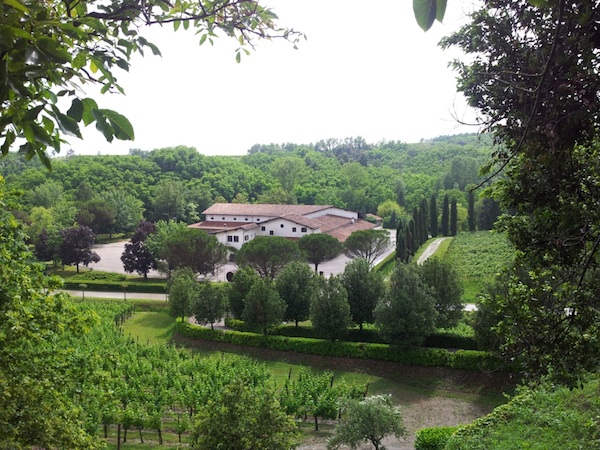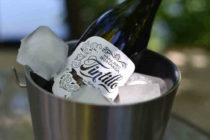Too many years had passed since reading A Farewell to Arms for “Gorizia” to resonate. This town is the setting for much of Hemingway’s famous novel about the Great War. Divided between two states, Italy and Slovenia, like Berlin once was and Texarkana still is, Gorizia gives its name – Collio Goriziano, or simply Collio – to the full representation of “the finest white-wine area not only in Friuli but in all of Italy. That observation is from Italian Wine for Dummies, easily the most useful of the dozen wine tomes I own. Truthfully.
I had the opportunity to spend several days in Collio in the northeastern Italian region of Friuli in early June sampling wines and meeting producers. South of the Julian Alps, its rolling hills are layered with rows of vines topped with villages. Lush forests and lines of cypresses provide verdant interludes. Its coastal plains are filled with prosperous, red-tile-roofed towns. It is all stereotypically, beautifully Italian. Signs bearing Slovene place names along with the Italian are not. Neither are the impossible-to-disregard monuments to World War I. Much of this area was at or near the front lines as Italy vainly and bloodily tried to wrest territory from the Austro-Hungarian Empire. Much of Collio was proudly part of the Empire for centuries.
That Austrian legacy is still present: Everywhere you can observe the area’s tradition of satiating the historic Germanic taste for white wines. The mild climate buttressed by the nearby Adriatic and the protective mountains to the north plus hill-laden vineyards atop unusual mineral-rich soil help provide nearly ideal conditions for several white varietals and even a few red ones, too.
The whites from Collio are generally quite rich and fuller-bodied than typical Italian whites, often with evident minerality and vibrant acidity. Many have the ability to age. These are serious wines – yes, even the usually forgettable Pinot Grigios. Though the wineries are prouder of wines made from the native Friulano (previously Tocai Fruliano), Ribolla Gialla and Malvasia grapes and efforts with Sauvignon (Blanc) and Pinot Bianco, it is Pinot Grigio that helps pay the bills.
“Pinot Grigio is what changed the economy here” for grape-growers and wine-makers a few decades ago, I was told by a producer. It was famed food-and-wine writer Luigi Veronelli who recognized the area’s potential for Pinot Grigio. His advocacy helped the area’s wine producers find popularity in markets around the world.
If you enjoy Pinot Grigio, and are interested in experiencing a richer and more nuanced expression of the varietal than is found in most supermarkets or hyper-marketed labels, try the ones from Collio. Several brands are available in the Houston area, both at the usual suspects and restaurants like Valentino and Tony’s.
The Houston Wine Merchant has Livon Pinot Grigio 2010 ($18), Marco Felluga Mongris Pinot Grigio 2009 ($18) – proprietor Roberto Felluga told my group that the reserve version of this can keep for a minimum of 10 years – and Livio Felluga Pinto Grigio 2010 ($27), from Marco’s older brother.
The main Richard’s on Kirby only has the Jermann Pinot Grigio 2010 ($26), a wine that caught my attention at the Italian Expo last year. Though the winery is in Collio adjacent to one of Livon’s properties, Jermann sources their grapes beyond the area and it does not carry the Collio appellation.
Spec’s downtown has both the Jermman and Livio Felluga wines plus the Marega Pinot Grigio 2008 ($18). Note: Spec’s carries several other wines from Collio producers, too.







Follow Us